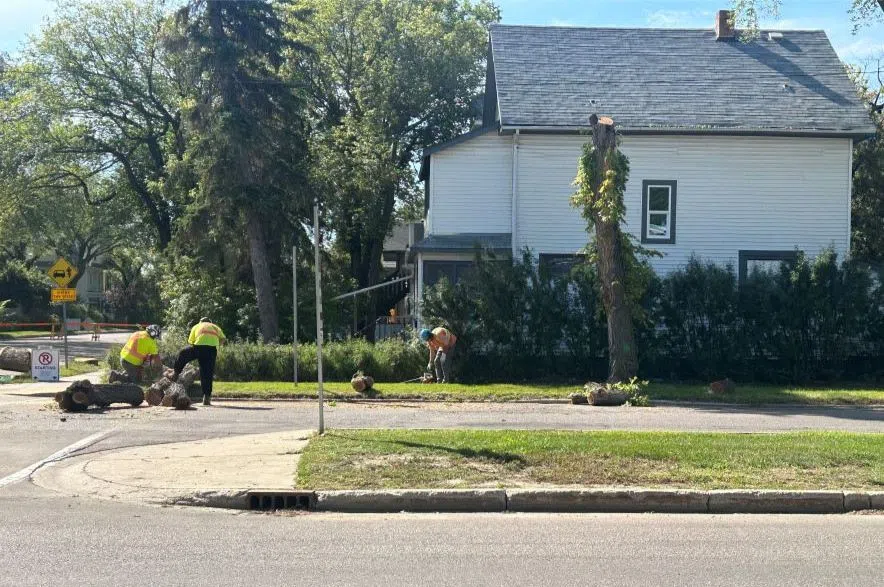Dutch elm disease is hitting Saskatoon especially hard this year.
According to Thai Hoang, city parks director, there are 12 confirmed cases of the tree affliction so far this year, up from 11 cases in 2024 and four cases in 2023.
Read more:
- Two confirmed cases of Dutch elm disease reported in Saskatoon
- Dutch elm disease hits Regina early, city urges public to help protect urban forest
- Prevention is key against Dutch Elm disease: Rick Van Duyvendyk on Greg Morgan
Reported cases have also been found in the Montgomery neighbourhood, Riversdale, City Park and Sutherland.
In the coming weeks, crews will be taking action to try and prevent it from spreading by removing trees adjacent to those displaying Dutch elm symptoms, but Hoang said they haven’t received a positive lab result.
The city is looking at removing 37 trees so far this year, he explained.
All of the trees being removed are on public property. Hoang said there have been three cases of the disease appearing on private property as well.
Dutch elm disease is caused by a fungus spread by bark beetles. When these beetles tunnel into an elm tree, the fungus enters the tree’s vascular system, choking off the flow of water and nutrients. If infected, the leaves will wilt and turn yellow, the branches will die and eventually the tree will die.
Hoang said it’s a costly process — about $2,000 per removal.
“For the 37 trees we’re looking to remove this year so far… we are looking at over $500,000 in value for those trees,”
It’s also expensive to replace the infected trees — likely several hundred dollars, including the labour to plant and establish them.
Dutch elm disease has also been a problem in Regina this year. So far, city crews have confirmed 17 infected trees up until the beginning of July; there were 85 trees infected in 2024.
Province wide pruning ban for elm trees ends
How can Dutch elm disease be prevented?
• Never store elm wood or branches. Don’t buy or take elm wood from anyone and don’t burn it.
• Follow the provincial pruning ban (Apr. 1 to Aug. 31). Elm bark beetles are attracted to freshly cut wood and are most active during this time period.
• Dispose of elm wood at the Saskatoon landfill. Do not take elm to the compost depot or put it in your green bin. Dispose of it immediately, even if it is during the provincial ban. Disposal of elm wood at the landfill is free.
How to identify and report unhealthy elm trees and firewood

A Wascana Centre staff member points to evidence of Dutch Elm Disease on a removed branch.(980 CJME file photo)
American elm trees with Dutch elm disease may start showing symptoms as early as June. Typically, the leaves will start to wilt and turn yellow, then curl and turn brown. If you suspect an unhealthy elm tree or are unsure of what type of firewood you have, take a photo and complete the online form at saskatoon.ca/dutchelmdisease or call Urban Forestry at 306-975-2890.
Elm pruning ban lifts on September 1
The provincial ban on elm pruning will be lifted on September 1.
The annual ban runs from April 1 to August 31 in an effort to help reduce the risk of spreading the disease.
The Saskatchewan environment ministry said regular pruning outside the ban period can help keep trees healthy and resistant to disease.
“Removing dead wood makes trees less attractive to elm bark beetles and other pests,” the ministry explained in a statement.
“With leaves still on the trees, dead branches are easier to spot and the early fall weather is ideal for tree maintenance.”
Anyone pruning an elm commercially must have completed a provincially recognized training program or work under the supervision of someone who has completed the training, the ministry noted.
Elm would should be disposed of properly at a location designated by the local municipality.
—with files from 650 CKOM











